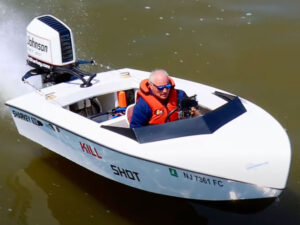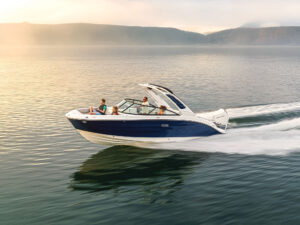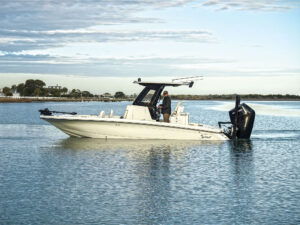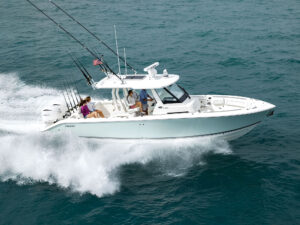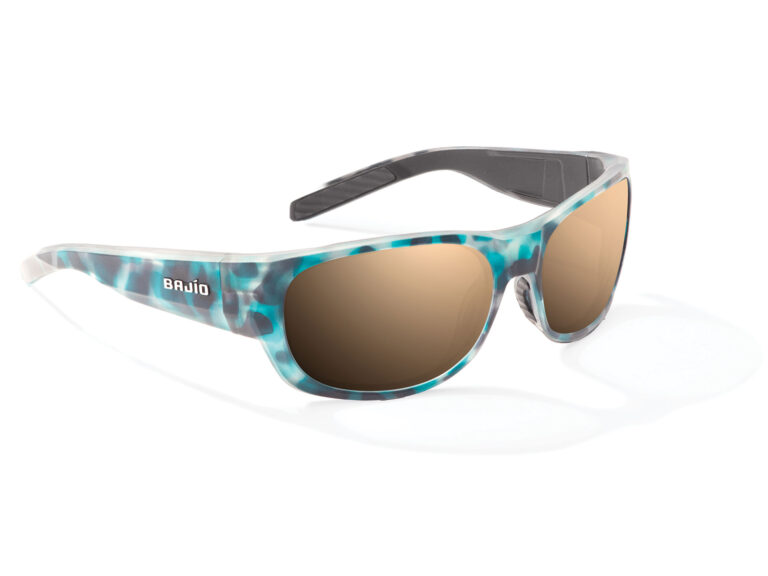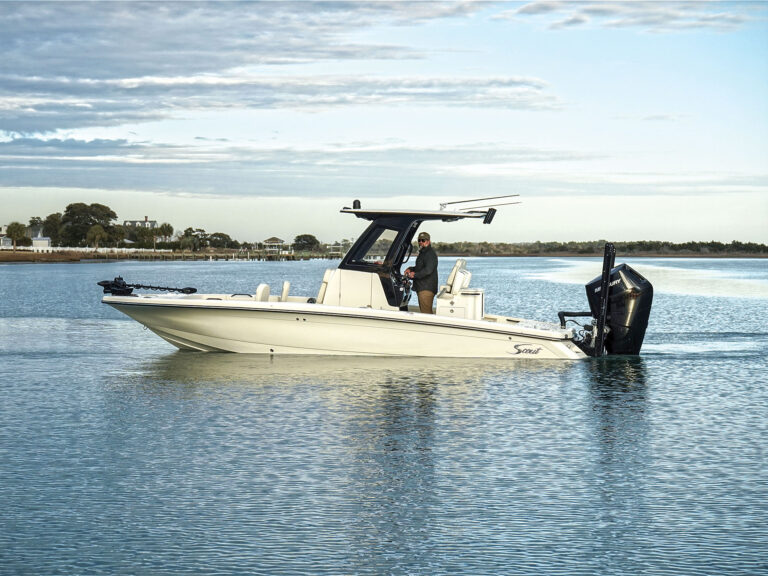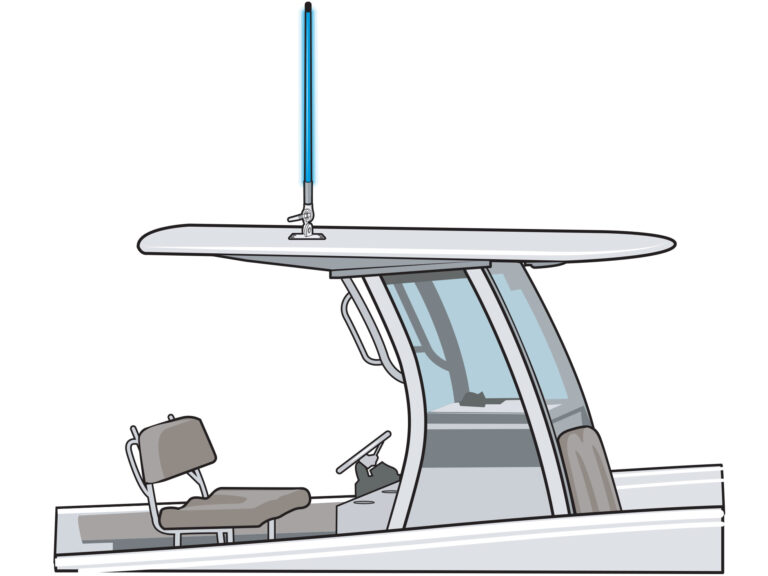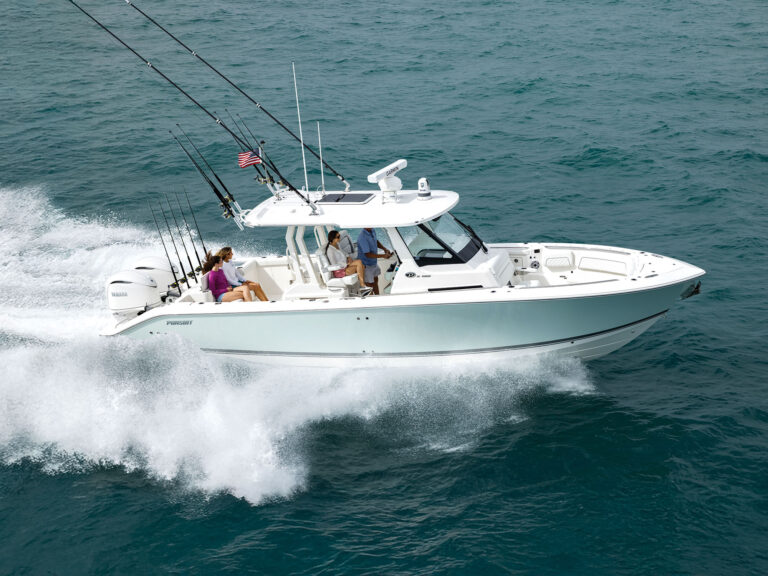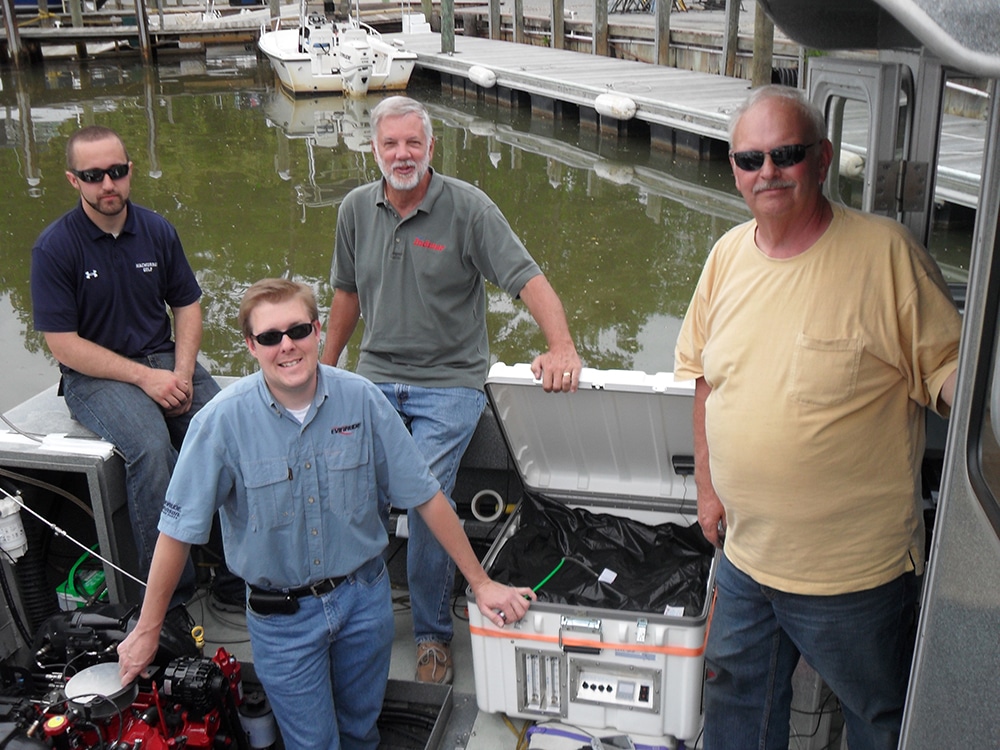
UPDATED DEC 28, 2015
Last June, I was invited to join a crew from Bombardier Recreational Products (BRP), the National Marine Manufacturers Association (NMMA), and the American Boat & Yacht Council (ABYC) aboard a pontoon boat rigged with a pair of Evinrude 150 E-Tec outboard motors at a marina on the Potomac River in Washington, DC. The effort was part of groundbreaking research into alternative biofuels to (hopefully) take the place of corn-based ethanol, which has causes problems in many marine applications
Had enough problems with ethanol in your boat’s gas yet? Haven’t we all? In 2004, this “first-generation biofuel” looked like a Win-Win for clean air, reduction of carbon emissions, and energy independence for the U.S. After all, we’d be distilling this fuel additive from domestically-grown corn and using it to oxygenate gasoline instead of MTBE, the high-tech clean-air additive that had been found to contaminate drinking water supplies.
Preliminary List of Retailers Selling Isobutanol Marine Fuel in 2016
But 10 years of burning “E10” (10% ethanol, 90% gasoline) in our boats, we’ve suffered through rough running, clogged fuel filters, poor fuel mileage, damaged fuel lines, leaking tanks (including some brand-new “ethanol-resistant” models), and catastrophic engine failures, with higher food prices as an added insult. As a fuel additive, ethanol offers only 65% of the energy content of gasoline, it attracts and readily mixes with water (a good attribute in whiskey but not in boat fuel), it corrodes metals, and it is has high vapor pressure, which actually helps fuel sitting in tanks evaporate and damage air quality. What’s to like here? Not much!
Meanwhile, the 2007 Energy Sustainability and Independence Act (ESIA) and its Renewable Fuel Standard (RFS) continue to raise the percentage of biofuel required in our gasoline year-by-year. Nothing wrong with the long-term goal of energy independence for the U.S. But the newest approved and widely-distributed fuel, E15 (15% ethanol, 85% gasoline), has proven itself not safe in marine engines and others that operate constantly under high loads, like outdoor power equipment. And the NMMA, BoatU.S., and other members of the boating community have let both Congress and the EPA know it, with both barrels. Even so, the U.S. Court of Appeals has ruled that this coalition does not have standing in the issue, and the Supreme Court has refused to hear the case (for more information, visit www.nmma.org). While the coalition weighs its legal options, several members are actively testing alternative fuel blends.
To their credit, the U.S. Department of Energy has stepped in, along with private partners that include the NMMA and several engine manufacturers (BRP, Volvo Penta, and Indmar) to look for a second-generation biofuel that can provide the important air quality benefits for our lungs while improving on the dismal performance attributes of ethanol. Oh, and by the way, it would be nice to find a fuel that can be transported to refineries efficiently by pipeline and blended with gasoline there (ethanol is too corrosive to ship by pipeline). And it would be even nicer if this biofuel could be produced by a “feedstock” with a higher BTU (energy) yield than corn, especially one that also requires less fertilizer.
No, this is not pie-in-the-sky, and yes, the researchers have found at least one promising replacement fuel additive that meets these criteria. It has also drawn the interest of several large corporations and partnerships capable of producing it on a national scale. The additive is isobutanol, a four-carbon alcohol that’s a chemical relative of ethanol with a longer chain. Here’s what we know about it so far.
In on-the-water tests over the past two years, isobutanol has proven to produce no more exhaust emissions than 100% EPA-approved test gasoline, nor E10. Meanwhile, it produces 82% percent of the energy in gasoline (as opposed to 65% for ethanol), so it gives fuel economy than E10 or E15. Finally, it has much less tendency to attract water and cause phase separation in fuel tanks, a key characteristic for marine use. Because the DOE has designated isobutanol as a “drop-in fuel,” it can legally be mixed with petroleum under the ESIA to meet the Renewable Fuel Standard, and increasing its use could help reduce greenhouse-gas emissions.
At least two large companies are experimenting with production of isobutanol. Gevo (www.gevo.com), which is furnishing the isobutanol for on-the-water testing for NMMA and its partners, is a renewable chemicals and advanced biofuels company that sees a wide variety of uses for isobutanol, from fuels to plastics. It has developed proprietary strains of microorganisms that can produce isobutanol efficiently in an industrial fermentation/distillation process into which an existing ethanol plant can be easily converted. The current feedstock is corn, but as cellulosic feedstock technology develops, the company will shift to like switchgrass, corn cobs and stalks, and scrap wood. Another big isobutanol player is Butamax (www.butamax.com), a joint venture of DuPont and BP that is exploring the use of both sugar beets and algae as feedstocks. Both Gevo and Butamax are running demonstration facilities to showcase the uses and benefits of isobutanol.
The specific fuel blend that NMMA and BRP tested last summer is 9% isobutanol, 6% ethanol, and 85% gasoline, which helps meet the accelerated RFS by reducing the percentage of fossil-fuel-derived gasoline without risking the destructive effects of E15. It’s a transitional fuel blend, and this is a continuing story. After a century in which America depended on 100% gasoline, our transportation fuels are evolving fast. Stay tuned. Boating will continue to cover the story, including reports on how the E-Tec 150s on that pontoon boat are faring on the Potomac River.

